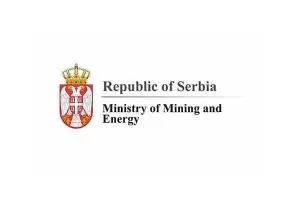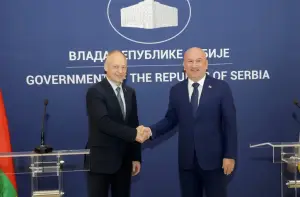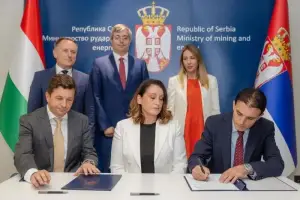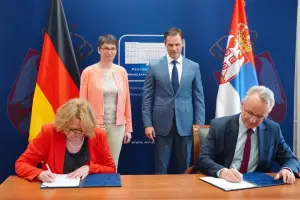- Serbia
Get to know Serbia
- Citizens
Culture and science
Health services
Pension and disability insurance
- Business
Employment
Economy
- Media
- Government
- Contact
Keep in touch
Contact form
Back
Keepin touch
Whether you have a question, comment, suggestion or any problem in the purview of the government, send us your message and we will try to respond as soon as possible. If your problem is not in our purview, we will forward your message to the relevant institution.
Q:
A:
Foreign trade grows over 20% in January-May 2006
Belgrade,
30 June 2006
The Serbian Statistics Office said that total foreign trade of Serbia from this January until May amounted to $6.68 billion, rising 21.3% from the previous year.
Expressed in euros, the volume of foreign trade stood at €5.48 billion, marking an increase of 29% against the same period in 2005.
Exports totalled $2.014 billion, surging 16.8% from a year earlier, while imports rose 23.4% to $4.67 billion.
Expressed in euros, exports increased to €1.65 billion, or 24.2%, while imports went up 31.1% to €5.894 billion against the same period in 2005.
The exchange of goods with Montenegro in the January-May period amounted to €207.4 million, with exports in the amount of €161.9 million and imports €45.5 million. If trade with Montenegro is included in Serbia’s foreign operations, then Serbia’s total foreign exchange would climb to €5.67 billion.
The increase in imports in the first five months of the current year was due to energy resources imports. Imports of gas, oil, electricity, coke, butane and diesel amounted to $862 million, which makes 18.5% of total imports.
The trade deficit in the January to May period was $2.65 billion, a 29.9% increase from the same period a year earlier. Expressed in euros, the deficit amounted to €2.17 billion, or 36.9%.
Exports-to-imports ratio was 43.2%, down from 45.6% from a year earlier. Expressed in euros the ratio is 43.1%, down from last year’s 45.5%.
The most exported items were intermediate goods, accounting for 69.4% (nearly $1.4 billion) of overall exports, followed by consumer goods, which made up 25.6% ($515 million) and equipment, making up 5% ($100.6 million) of total exports.
Imports were also dominated by intermediate goods, 63.7% ($2.97 billion), consumer goods, 21.9% ($1.020 billion), and equipment, 14.4% ($674.3 million) of overall imports.
Major importers of Serbian goods were Italy ($348.2 million), Bosnia-Herzegovina ($247.9 million), and Germany ($211.7 million).
The largest exporters to Serbia were the Russian Federation ($795.2 million), Germany ($430.4 million), and Italy ($391.9 million).
Exports totalled $2.014 billion, surging 16.8% from a year earlier, while imports rose 23.4% to $4.67 billion.
Expressed in euros, exports increased to €1.65 billion, or 24.2%, while imports went up 31.1% to €5.894 billion against the same period in 2005.
The exchange of goods with Montenegro in the January-May period amounted to €207.4 million, with exports in the amount of €161.9 million and imports €45.5 million. If trade with Montenegro is included in Serbia’s foreign operations, then Serbia’s total foreign exchange would climb to €5.67 billion.
The increase in imports in the first five months of the current year was due to energy resources imports. Imports of gas, oil, electricity, coke, butane and diesel amounted to $862 million, which makes 18.5% of total imports.
The trade deficit in the January to May period was $2.65 billion, a 29.9% increase from the same period a year earlier. Expressed in euros, the deficit amounted to €2.17 billion, or 36.9%.
Exports-to-imports ratio was 43.2%, down from 45.6% from a year earlier. Expressed in euros the ratio is 43.1%, down from last year’s 45.5%.
The most exported items were intermediate goods, accounting for 69.4% (nearly $1.4 billion) of overall exports, followed by consumer goods, which made up 25.6% ($515 million) and equipment, making up 5% ($100.6 million) of total exports.
Imports were also dominated by intermediate goods, 63.7% ($2.97 billion), consumer goods, 21.9% ($1.020 billion), and equipment, 14.4% ($674.3 million) of overall imports.
Major importers of Serbian goods were Italy ($348.2 million), Bosnia-Herzegovina ($247.9 million), and Germany ($211.7 million).
The largest exporters to Serbia were the Russian Federation ($795.2 million), Germany ($430.4 million), and Italy ($391.9 million).
-
 Belgrade, 21 July 2025
Belgrade, 21 July 2025Construction of oil pipeline with Hungary to begin early next year
-
 Belgrade/Athens, 17 July 2025
Belgrade/Athens, 17 July 2025Serbia continues to align with EU in field of energy
-
 Kostolac, 14 July 2025
Kostolac, 14 July 2025First solar power plant Petka in Kostolac put into trial operation
-
 Belgrade, 11 July 2025
Belgrade, 11 July 2025Potential for improving cooperation with Belarus in many areas
-
 Požega, 5 July 2025
Požega, 5 July 2025Section of Pakovraće - Požega highway officially opened
-
 Belgrade, 2 July 2025
Belgrade, 2 July 2025Technical specifications defined for Serbia-Hungary oil pipeline
-
 Belgrade, 30 June 2025
Belgrade, 30 June 2025IMF confirms Serbia successfully implementing all agreed reforms
-
 Belgrade, 27 June 2025
Belgrade, 27 June 2025Double Taxation Avoidance Agreement with Germany signed
-
 Kostolac, 25 June 2025
Kostolac, 25 June 2025Construction of Kostolac wind farm nearing completion
-
 Belgrade, 24 June 2025
Belgrade, 24 June 2025Government supports request for new postponement of sanctions against NIS
